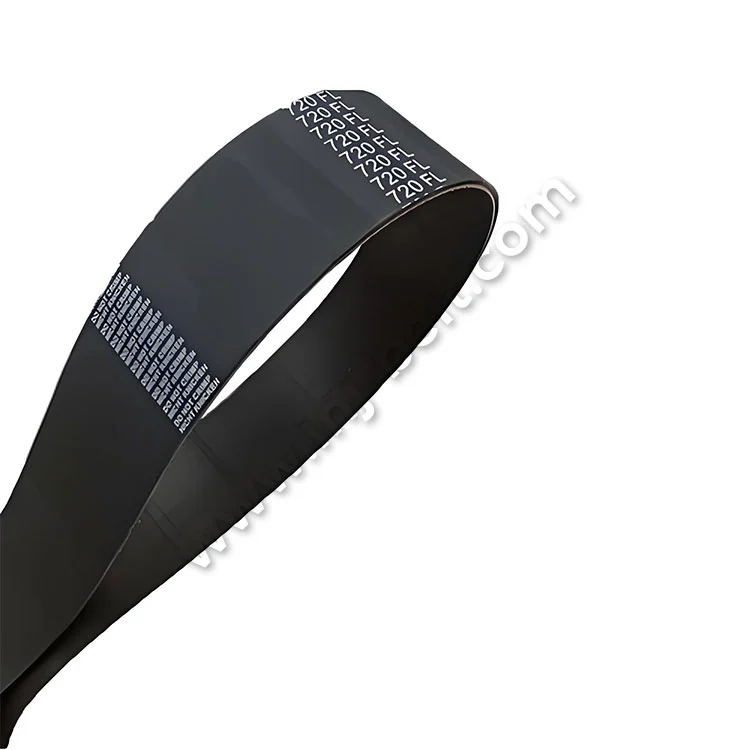What Are Rubber Transmission Belts?
2025-08-04
Rubber transmission belts play a crucial role in powering machinery across industries. But what are rubber transmission belts, and why are they so widely used? In this comprehensive guide, we'll explain their function, types, key specifications, and maintenance tips while showcasing why LSL® rubber transmission belts stand out in quality and performance.
Understanding Rubber Transmission Belts
Rubber transmission belts are flexible loops made of reinforced rubber that transfer power between rotating shafts in machinery. They're essential components in:
-
Automotive engines
-
Industrial equipment
-
Agricultural machinery
-
HVAC systems
Key Advantages of Our LSL® Rubber Transmission Belts
1. High efficiency – Minimal power loss during transfer
2. Shock absorption – Reduces vibration and noise
3. Durability – Resists wear, heat, and oil
4. Cost-effective – Longer lifespan than alternatives
Types of Rubber Transmission Belts
We manufacture several types to meet different industrial needs:
1. V-Belts
-
Most common type
-
Trapezoidal cross-section for better grip
-
Used in automotive and industrial applications
2. Timing Belts
-
Precise tooth design for synchronized movement
-
Common in engines and robotics
-
Prevents slippage
3. Flat Belts
-
Simple, flat design
-
Used in conveyor systems
-
High-speed applications
4. Multi-Groove Belts
-
Multiple V-shaped ribs
-
Higher power transmission capacity
-
Compact design
Technical Specifications of LSL® Rubber Transmission Belts
Our products meet rigorous quality standards with these specifications:
| Parameter | Specifications |
|---|---|
| Materials | Neoprene, EPDM, Nitrile rubber |
| Tensile Strength | 15-25 MPa |
| Temperature Range | -30°C to +120°C |
| Width Options | 10mm to 500mm |
| Length Options | Custom lengths available |
| Standards | ISO 4184, RMA, DIN |
Applications Across Industries
Rubber transmission belts from our factory power operations in:
-
Automotive – Engine timing, alternators
-
Manufacturing – Conveyor systems, pumps
-
Agriculture – Harvesters, tractors
-
Mining – Heavy-duty equipment
FAQ: What Are Rubber Transmission Belts?
1. How do I choose the right rubber transmission belt?
Consider factors like load capacity, speed, pulley size, and environmental conditions. Our LSL® experts can help select the perfect belt for your application.
2. What causes rubber transmission belts to fail prematurely?
Common causes include improper tension, misalignment, extreme temperatures, and oil contamination. Regular inspection prevents unexpected failures.
3. Can rubber transmission belts be repaired?
While minor damage can sometimes be temporarily fixed, we recommend replacement for optimal performance and safety. Our belts are designed for long-term reliability.
Why Choose LSL® Rubber Transmission Belts?
We stand behind our products with:
1. Premium materials – High-grade rubber compounds
2. Advanced manufacturing – Precision molding for consistent quality
3. Rigorous testing – Each belt undergoes performance checks
4. Custom solutions – Tailored specifications available
Final Thoughts
Now that you understand what rubber transmission belts are and their importance, trust Zhejiang INJ Transmission System Co., Ltd. for your power transmission needs. Our LSL® rubber transmission belts deliver unmatched performance and durability for industrial applications worldwide. Ready to upgrade your machinery? Contact us today for expert advice and competitive pricing on premium-quality transmission belts!



